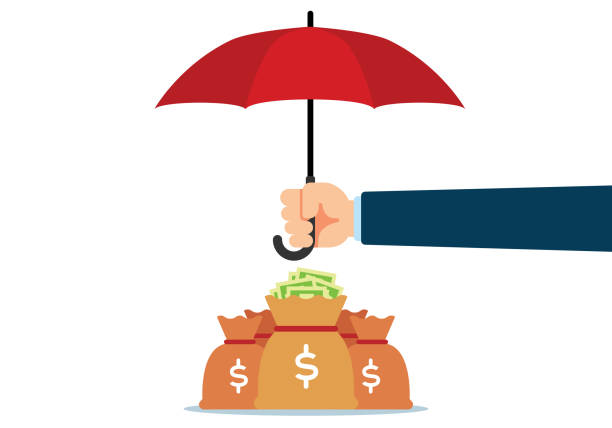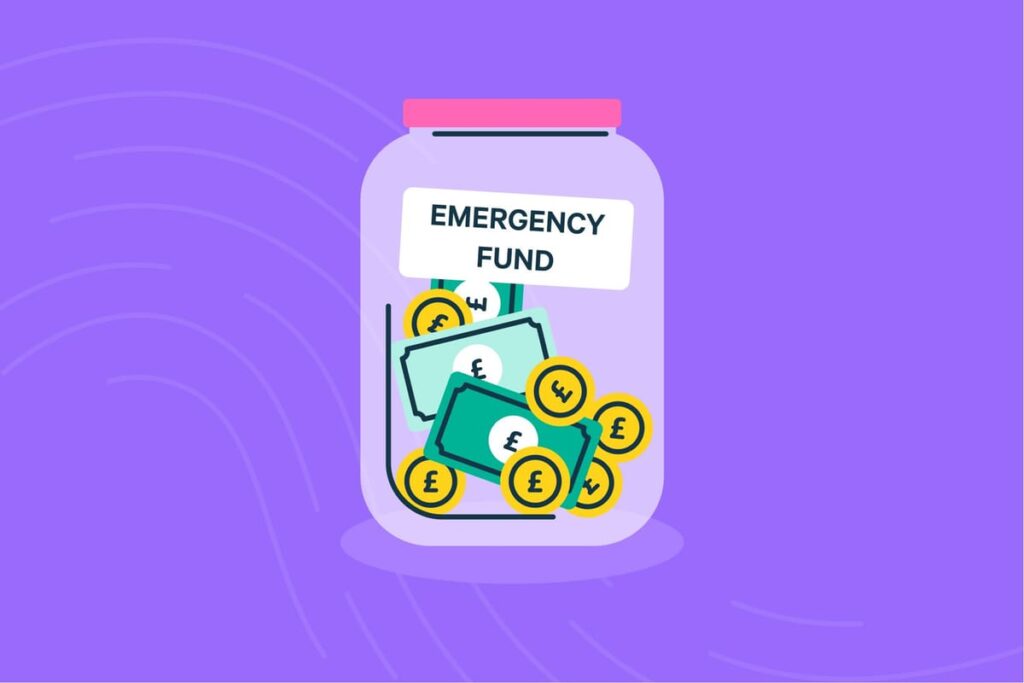Life is unpredictable. One minute everything is calm, the next you’re faced with a sudden job loss, a medical crisis, or a major home repair. In these moments, an emergency fund is the fortress that protects your financial stability, preventing a crisis from turning into a total collapse into debt.
While most people know they should have an emergency fund, many make critical errors in building and managing it. These mistakes can render your financial cushion useless precisely when you need it most. By sidestepping these common pitfalls, you can ensure your safety net is strong and ready for anything.
Mistake 1: Miscalculating Your Target Amount
A widely cited rule of thumb suggests saving three to six months of living expenses. For many, this is a great starting point. However, treating this rule as a universal mandate without considering your unique circumstances is a significant error.
The Pitfall: One Size Doesn’t Fit All
Your ideal fund size depends on your financial profile, which includes:
- Job Security: If you work in a volatile industry or are self-employed with inconsistent income, you should aim for 9 to 12 months of expenses. A dual-income household with stable jobs may feel comfortable with less.
- Dependents: More people relying on your income means higher essential costs and a need for a larger buffer.
- Health and Insurance: If you have high-deductible health insurance or chronic medical conditions, your cash cushion for unexpected bills should be much higher.
- Debt: While the fund isn’t for paying off consumer debt, the higher your mandatory minimum monthly payments, the more you need to cover them if your income stops.
The Solution: Focus on Essential Expenses
To calculate your true target, create a budget that separates your essential (mortgage/rent, minimum debt payments, groceries, utilities, transportation) from your discretionary (dining out, entertainment, vacations) expenses.
Your target should cover 6-12 months of your essential expenses, not your current lifestyle spending.
Mistake 2: Keeping the Funds in the Wrong Place
The location of your emergency savings is a delicate balance between safety, liquidity, and growth. Getting this balance wrong is one of the most common and damaging mistakes.
The Pitfall: Chasing High Returns
Many people, frustrated by the low interest rates of traditional savings accounts, make the mistake of investing their emergency fund in volatile assets like stocks, cryptocurrencies, or real estate. The primary goal of an emergency fund is capital preservation, not maximizing returns.
Imagine you need $10,000 for an urgent car repair, but the stock market has crashed, and your investment is now worth only $8,000. You’ve lost money and are now short on cash. Similarly, storing the money in instruments with lock-in periods (like long-term Fixed Deposits or certain insurance plans) makes them inaccessible without penalty.
The Solution: Prioritize Liquidity and Security
Your emergency fund must be liquid (easily and quickly converted to cash) and secure (safe from market fluctuations). Ideal placements include:
- High-Yield Savings Accounts (HYSAs): These are federally insured and offer a much higher interest rate than standard savings accounts, helping your money grow slightly while remaining instantly accessible.
- Money Market Accounts: Similar to HYSAs, offering liquidity and slightly better rates than traditional banks.
- Short-Term Fixed Deposits or Ultra Short Duration Debt Funds: A small portion can be placed here to earn better returns, provided the money can be accessed within a few days without significant penalty.
Crucially, keep this money in an account separate from your everyday checking and regular savings. If it’s out of sight, it’s out of mind and less tempting to spend.
Mistake 3: Dipping into the Fund for “Non-Emergencies”
The emergency fund is a financial fire extinguisher—you should only use it to put out a fire, not to light a candle. Misusing the fund is a slow but certain way to destroy your financial stability.
The Pitfall: Defining “Emergency” Too Loosely
A vacation, a new gadget, a holiday gift splurge, or a “great deal” on a new car are not emergencies. These are planned, discretionary expenses that should be budgeted for separately. Dipping into the fund for these things leaves you completely exposed when a real crisis strikes.
The Solution: Establish and Stick to Clear Rules
Before you even start saving, define what constitutes a true emergency. It should fall into one of these categories:
- Income Shock: Job loss or a significant reduction in working hours.
- Medical Crisis: Unexpected, large bills not covered by insurance.
- Housing/Car Crisis: Essential, non-deferrable repairs (e.g., a burst pipe, a broken furnace, critical car failure) that are necessary for safety or transportation.
- Family Crisis: An unexpected event requiring immediate travel or expense (e.g., a funeral).
If the expense can be budgeted for, postponed, or covered by insurance, it is not an emergency fund expense.
Mistake 4: Not Automating Your Savings
Procrastination and inconsistency are silent killers of any financial plan. Relying on willpower alone to save for your emergency fund is a blueprint for failure.
The Pitfall: “I’ll Save What’s Left Over”
When you wait until the end of the month to save what’s “left over,” you’re making savings a secondary goal. Human nature dictates that discretionary spending will often absorb any remaining funds, leaving you with little to transfer to your emergency fund.
The Solution: Pay Yourself First
Treat your emergency fund contribution like any other non-negotiable bill, such as rent or a mortgage payment.
- Set up automatic transfers to your dedicated emergency fund account to occur immediately after your payday. Even a small, consistent amount is better than a large, irregular one.
- Increase your contributions whenever you get a raise, bonus, or tax refund. Don’t let your lifestyle creep absorb all your extra income; funnel a portion into the fund.
- Start Small: If a $1,000 savings goal feels overwhelming, start with a “starter fund” of just $500 or $1,000. Achieving this first, small milestone will build momentum and motivation.
Mistake 5: Failing to Replenish the Fund After Use
The moment you use your emergency fund for a legitimate crisis, its primary function is not to solve the emergency, but to be immediately rebuilt. Failing to do so is like driving a car with a flat spare tire—you’re still financially vulnerable.
The Pitfall: Assuming the Crisis is Over
Once the immediate crisis (e.g., the car repair is done, the medical bill is paid) is resolved, the urgency to save again often fades. People fall back into old spending habits, leaving their fund depleted and totally exposed for the next unexpected event.
The Solution: Make Replenishment Your New Financial Priority
The day you withdraw money from your emergency fund, it instantly becomes your number one financial goal until it is full again.
- Immediately review your budget: Cut back on all non-essential discretionary spending (temporarily!) and redirect that cash flow back into the fund.
- Automate your replenishment: Increase your regular automatic contribution until the fund is restored to its target level.
Mistake 6: Ignoring Inflation and Life Changes
An emergency fund isn’t a static asset. What covered six months of expenses five years ago may only cover four months today due to inflation and changes in your life.
The Pitfall: Setting It and Forgetting It
You reach your target of six months, celebrate, and then never look at the account balance again. Meanwhile, the cost of living—rent, groceries, utilities—has gone up by 15%, meaning your six-month cushion is now functionally smaller. Furthermore, life changes like moving to a higher cost-of-living area, having a child, or taking on a new mortgage significantly increase your essential expenses.
The Solution: Annual Review and Recalculation
Make it a habit to review and recalculate your emergency fund target at least once a year.
- Recalculate your current essential monthly expenses. Factor in any rising costs.
- Compare this to your current fund balance. If your essential expenses are now higher, increase your savings goal accordingly.
- Adjust the fund’s location to one that keeps pace with inflation, like a high-yield savings account or a short-term, low-risk bond fund (for the excess portion).
Final Thoughts: The Cost of Complacency
The biggest mistake of all is simply procrastination. Financial security is not an accident; it is the result of intentional planning and avoiding the easy traps that lead to vulnerability. By avoiding these common errors—by correctly sizing your fund, prioritizing liquidity over returns, setting a strict definition for emergencies, automating your saving, and committing to replenishment—you transform your emergency fund from a theoretical safety net into a reliable, unbreachable financial fortress.




